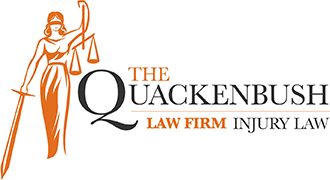West Palm Beach Back Injury Attorney
If you’ve sustained a back injury anyplace in the State of Florida, this West Palm Beach Back Injury Lawyer can help you to seek compensation for your injuries. Back injuries can be debilitating. They may result from many different types of accidents. For example, a person may sustain a back injury in a car accident, a slip and fall accident, or a trip & fall accident.
There are many different types of back injuries. For example, one of the more frequent types of back injuries is a herniated disc. A herniated disc results when an “intra-vertebral disc” in the spine ruptures. An intervertebral disc is located between the spinal vertebra (the bony structures in the spine). An intervertebral disc acts as a shock absorber for the vertebrae. The disc also allows for movement and flexion in the spine.
During an accident, a disc may rupture and a herniation or “bulge” may result. When a disc herniates, fluid may leak out. This fluid may eventually compress the spinal cord (causing impingement). Such impingement may cause symptoms in other parts of the body (such as numbness, tingling and pain). For example, spinal cord impingement in the neck may cause symptoms in the arms, hands and fingers – while impingement in the back may cause symptoms in the legs, feet and toes (called “sciatica”).
Fluid from a disc herniation may also make contact with the nearby nerve roots. This may cause more localized pain around the nerve roots that have been affected.
When the chord compression/impression is bad enough, it may even cause paralysis. This may be the reason for paraplegia or quadriplegia.
A disc bulge is essentially a milder form of a herniated disc. With a disc bulge, the disc “protrudes” out but doesn’t actually rupture as in a herniation. While a disc bulge can cause symptoms similar to a herniated disc, it doesn’t usually require surgery.
Disc herniations and bulges can typically be detected on a diagnostic study such as an MRI (standing for “magnetic resonance imaging”) or CT scan. MRI scans and CT scans are very good at detecting “soft tissue” in the body (i.e., not bones). X-rays are not so good at detecting this, but they are very good at detecting bones (which MRI’s and CT Scans are not so good at detecting).
X-rays, for example, are better at detecting fractured vertebra (typically referred to as a “broken back”). When a vertebrae in the spine has been fractured, it will either be “displaced” (i.e., moved from its original position) or “non-displaced” (i.e., still in its original position).
If you don’t receive compensation in your case, Mr. Quackenbush won’t get paid himself. In fact, Mr. Quackenbush won’t receive any payment for his work until you’ve made a recovery in your case. This is referred to as contingency, and it indicates that there is no risk to you in pursuing a case.
If you would like a free, no obligation consultation of your case, contact Mr. Quackenbush today. He can be reached anytime at 954-448-7288. Mr. Quackenbush will gladly talk to you about all parts of your case for free if you’ve sustained a back injury anywhere in the State of Florida – including Fort Lauderdale, Broward County, West Palm Beach and Palm Beach County.
Clients Seek Advice from this West Palm Beach Back Injury Lawyer
One of the typical arguments that defense attorneys in a back injury case will make is that your back problems were pre-existing. That is, we all develop “wear-and-tear” in our backs as we age. This is known as degeneration. Defense attorneys frequently argue that, after an accident, the back pain/symptoms you experience are actually due to a pre-existing degenerative condition or pre-existing degenerative change (rather than from the accident).
Nevertheless, even if you did have back problems before your accident, you are entitled to receive compensation for the aggravation or exacerbation of those back problems. This is so because the law in the State of Florida says that a negligent person “takes his or her victim as they are.” This means that a negligent person is responsible for injuring all sorts of people. If the person injured by a negligent person was already sick, diseased or frail before the accident, then the negligent person will still be responsible for whatever aggravation or exacerbation of those conditions he or she causes. That is, the negligent person doesn’t get off or escape responsibility simply because the injured person already had physical/health problems before the accident. In fact, if you aggravated or exacerbated a pre-existing condition and your case goes to trial, the Judge will read the Jury a “jury instruction” instructing them of this law.
This Palm Beach County Back Injury Law Firm Pursues Justice Zealously
Back injuries are typically treated by orthopedic doctors/surgeons, neurologists, neurosurgeons, or chiropractors – amongst other doctors.
Back injuries are treated with all sorts of treatment modalities. These include “conservative care.” Conservative care indicates that the doctor is first trying to treat the patient non-surgically. If the conservative care doesn’t help/work, then the doctor may consider surgery. Conservative care may include physical therapy or chiropractic treatment.
If the conservative care doesn’t work, then the doctor may consider injections – including epidural and facet-block injections. While injections may help to alleviate symptoms such as pain, the relief is typically only temporary.
When the pain comes back, the doctor may consider surgery. Back surgery may take several forms. One type of back surgery frequently performed is a discogram. In a discogram, the doctor tests the various disc levels in your back to determine which disc is causing you symptoms.
Once the doctor has discovered the identity of the at-fault disc, he may consider another operation on that disc. This may include a discectomy procedure. In a discectomy, the doctor removes the fluid that has leaked out of the disc. This fluid is typically removed from the spinal canal surrounding the disc. By removing this fluid, the procedure may alleviate the symptoms you’re experiencing.
Finally, if the discectomy doesn’t help, the doctor may consider a fusion procedure. In a fusion, the doctor will remove the herniated disc and “fuse” the two neighboring vertebrae together. Frequently, “hardware” such as rods, plates and screws will then be placed into your spine in order to hold the fused-vertebrae together and allow for proper healing.
While a fusion may be effective in alleviating symptoms such as pain, numbness and tingling, it may also cause lack of spinal mobility. A fused level in the spine will also cause added-stress on the other levels of the spine, and this may cause the need for future procedures.
Another procedure that your doctor may consider is called a “disc-replacement surgery.” In a disc-replacement procedure, the intra-vertebral disc is actually replaced (rather than being removed and the two neighboring vertebrae being fused together as in a fusion).
One final back surgery that many surgeons perform is called a “rhizotomy.” In a rhizotomy, a doctor will attempt to destroy nerve roots in the spine that are causing negative symptoms such as pain, numbness and tingling as a result of a herniated or bulging disc.
Call to Speak to this South Florida Back Injury Attorney
Mr. Quackenbush will give you a free, no obligation consultation if you’ve sustained a back injury anyplace in the State of Florida. Call him at 954-448-7288 today, and he will talk to you about your case at no charge to you whatsoever.
Additionally, Mr. Quackenbush will not get paid anything until you’ve received compensation in your case. This is referred to as contingency, and it indicates that there is no risk to you.













